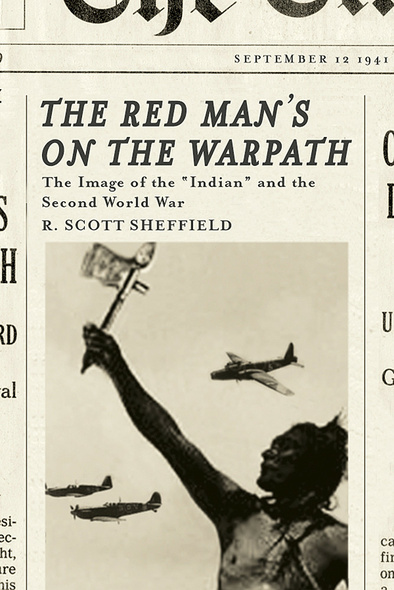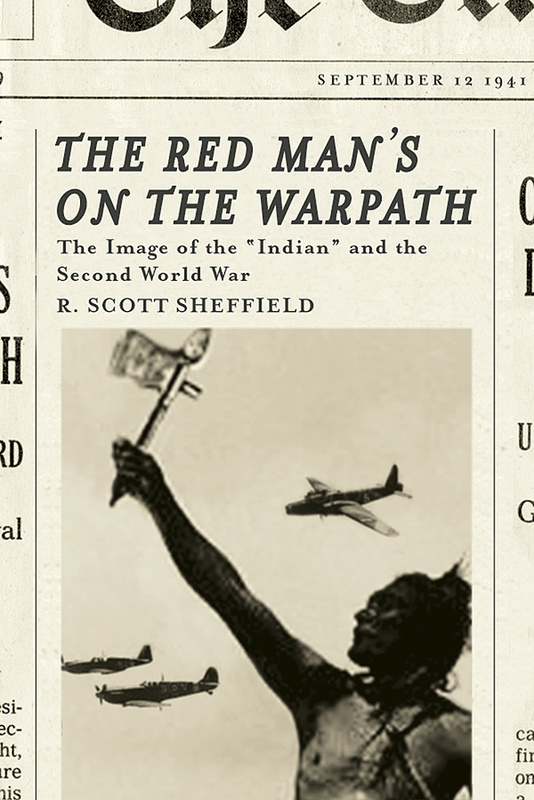
The Red Man's on the Warpath
The Image of the "Indian" and the Second World War
“The red man’s on the warpath! The time has come for him to dig up the hatchet and join his paleface brother in his fight to make the world safe for the sacred cause of freedom and democracy.” -- Winnipeg Free Press, May 1941
During the Second World War, thousands of First Nations people joined in the national crusade to defend freedom and democracy. High rates of Native enlistment and public demonstrations of patriotism encouraged Canadians to re-examine the roles and status of Native people in Canadian society. The Red Man’s on the Warpath explores how wartime symbolism and imagery propelled the “Indian problem” onto the national agenda, and why assimilation remained the goal of post-war Canadian Indian policy – even though the war required that it be rationalized in new ways.
The word “Indian” conjured up a complex framework of visual imagery, stereotypes, and assumptions that enabled English Canadians to explain the place of First Nations people in the national story. Sheffield examines how First Nations people were discussed in both the administrative and public realms. Drawing upon an impressive array of archival records, newspapers, and popular magazines, he tracks continuities and changes in the image of the “Indian” before, during, and immediately after the Second World War.
Informed by current academic debates and theoretical perspectives, this book will interest scholars in the fields of Native-Newcomer and race relations, war and society, communications studies, and post-Confederation Canadian history. Sheffield’s lively style makes it accessible to a broader readership.
Informed by current academic debates and theoretical perspectives, this book will interest scholars in the fields of Native-Newcomer and race relations, war and society, communications studies, and post-Confederation Canadian history. Sheffield’s lively style makes it accessible to a broader readership.
Sheffield’s analysis of the unfolding of these successive images on the whole is persuasive. While his interpretation, as he forthrightly acknowledges, is ‘in several respects similar (10)’ to Ronald Haycock’s The Image of the Indian, Sheffield’s research is more systematic and his argument more fine-grained ... The Red Man’s on the Warpath is an important contribution to our understanding of both domestic attitudes towards First Nations and the impact of external events upon those views.
Subtle, interesting book ... It is a mark of the quality of this book that it stimulates such broad questions, while satisfying our curiousity about a particular phase of Canadian history.
Sheffield’s exploration of this time period, an often-overlooked era in Canadian Aboriginal history, his ‘holistic’ use of newspapers to access images of First Nations people held by the dominant society, combined with his detailed, yet readable argument, makes an important contribution to the twentieth-century historiography of Canadian Aborgininal people.
Sheffield’s task is monumental and, accordingly, the scope of his documentary analysis is impressive ... Sheffield has clearly made a valuable contribution of an underdeveloped area of scholarship. He has laid the pioneering framework for future work that will, I hope, fill in the remaining gaps ...
Sheffield’s account of how the Native community was perceived by non-Natives has never been duplicated or even attempted. This book adds a great deal to our understanding of the war era.
Admirably contextualized and theoretically informed, this engaging study has significance not only for our understanding of Native policy but for human rights, race relations, and popular culture during a crucial period in Canadian history.
Sheffield shows impressive versatility in relating popular cultural perceptions of First Nations peoples to the government policies that were conditioned by them. It’s theoretically sophisticated, and great fun to read at the same time.
Introduction
1 The Image of the “Indian” in English Canada, 1930-39
2 The “Administrative Indian” as Soldier and Conscript, 1939-45
3 The “Public Indian” Goes to War, September 1939-December 1941
4 Winning the War Only to Lose the Peace? Reconstructing the “Public Indian,” 1943-45
5 The “Administrative Indian” at the Threshold of Peace, January-March 1946
6 Into the Arena: Marshalling the Competing Indian Images in Postwar Canada, 1945-48
7 Whither the “Indian”? The Special Joint Senate and House of Commons Committee to Reconsider the Indian Act, 1946-48
Conclusion
Notes
Bibliography
Index




